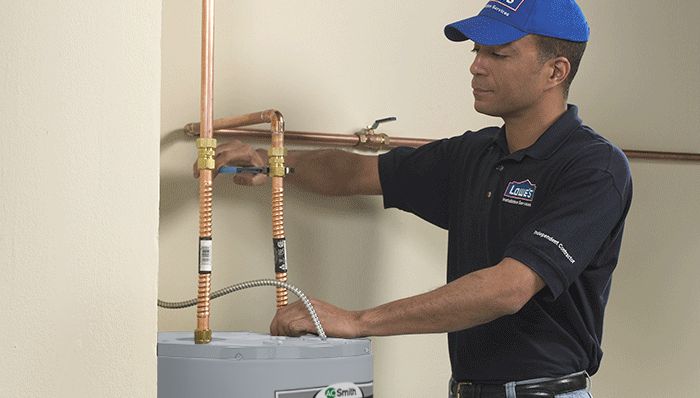We've noticed this post pertaining to Water Heater Maintenance Tips You Can't Afford to Forget down the page on the internet and decided it made perfect sense to discuss it with you over here.

Warm water is important for day-to-day comfort, whether it's for a revitalizing shower or cleaning dishes. To ensure your warm water system runs efficiently and lasts much longer, regular maintenance is vital. This post provides functional pointers and insights on exactly how to keep your home's hot water system to stay clear of interruptions and pricey repairs.
Introduction
Keeping your home's warm water system might seem challenging, yet with a couple of easy actions, you can guarantee it operates smoothly for many years to come. This guide covers whatever from recognizing your hot water system to DIY maintenance ideas and recognizing when to contact specialist aid.
Importance of Preserving Your Warm Water System
Normal upkeep not just prolongs the life expectancy of your warm water system yet likewise guarantees it operates efficiently. Disregarding maintenance can lead to reduced efficiency, greater energy expenses, and even early failing of the system.
Indicators Your Warm Water System Requirements Upkeep
Recognizing when your warm water system requires interest can stop significant issues. Look out for signs such as inconsistent water temperature, strange noises from the heater, or rusty water.
Purging the Water Heater
Purging your hot water heater eliminates sediment accumulation, enhancing efficiency and lengthening its life.
Monitoring and Changing Anode Rods
Anode poles avoid rust inside the tank. Inspecting and replacing them when broken is crucial.
Complicated Issues Calling For Expert Help
Instances include significant leaks, electrical issues, or if your hot water heater is continually underperforming.
Routine Professional Maintenance Perks
Professional maintenance can include thorough inspections, tune-ups, and ensuring conformity with safety criteria.
Evaluating and Changing Temperature Level Setups
Readjusting the temperature level settings makes certain optimal performance and security.
DIY Tips for Maintenance
You can do a number of maintenance tasks yourself to keep your warm water system in leading problem.
Checking for Leaks
On a regular basis examine pipes and connections for leakages, as these can result in water damages and higher costs.
Recognizing Your Warm Water System
Before diving right into upkeep tasks, it's practical to recognize the fundamental parts of your warm water system. Generally, this consists of the water heater itself, pipes, anode rods, and temperature level controls.
Monthly Upkeep Tasks
Normal regular monthly checks can assist catch minor issues before they escalate.
Checking Pressure Relief Valves
Examining the stress safety valve ensures it functions correctly and stops excessive stress buildup.
Shielding Pipes
Protecting warm water pipes minimizes warmth loss and can save power.
When to Call a Specialist
While DIY upkeep is advantageous, some problems call for specialist competence.
Verdict
Regular maintenance of your home's warm water system is necessary for efficiency, longevity, and cost savings. By complying with these pointers and knowing when to seek expert aid, you can ensure a reliable supply of hot water without unforeseen disturbances.
How to Maintain an Instant Hot Water Heater
Before tinkering with your hot water heater, make sure that it’s not powered on. You also have to turn off the main circuit breaker and shut off the main gas line to prevent accidents. Also turn off the water valves connected to your unit to prevent water from flowing into and out of the appliance. 2. When you’re done, you have to detach the purge valves’ caps. These look like the letter “T†and are situated on either side of the water valves. Doing so will release any pressure that has accumulated inside the valves while at the same time avoid hot water from shooting out and burning your skin. 3. When the purge valves’ caps are removed, you have to connect your hosing lines to the valves. Your unit should have come with three hoses but if it didn’t, you can purchase these things from any hardware or home repair shops. You can also get them from retail stores that sell water heating systems. Read the user’s manual and follow it to complete this task properly. When the hosing lines are connected, open the purge port’s valves. 4. You should never use harsh chemical cleaners or solutions when cleaning your unit. Make use of white vinegar instead. It should be undiluted and you’ll probably use about 2 gallons. 5. Now flush your water heater. This task should probably take about 40 minutes. We can’t give you specific directions for this because the procedure is carried out depending on the type, model and brand of your heater. With that being said, refer to the user’s manual. 6. When you’re done draining the unit, you have to turn off the purge port valves again. Remove the hosing lines that you earlier installed on each of the water valves. Put the valve caps (purge port) back in their respective places and be very careful so as not to damage the rubber discs that are found inside these caps. 7. Now that everything’s back in place, check your user’s manual again to find out how to reactivate your water heating system. 8. Once it is working, turn one of your hot water faucets on just to let air pass through the heater’s water supply pipes. Leave the tap on until water flows smoothly out of it. https://www.orrplumbing.com/blog/2014/september/how-to-maintain-an-instant-hot-water-heater/

I am just very taken with What Kind of Maintenance Do Water Heaters Need? and I hope you appreciated the entire blog posting. Feel free to set aside a second to share this post if you appreciated it. We appreciate your readership.
Learn More